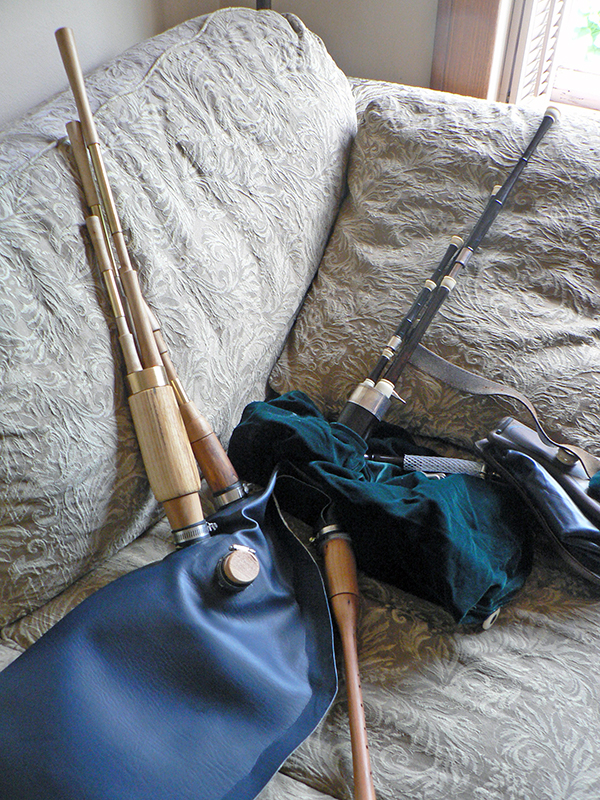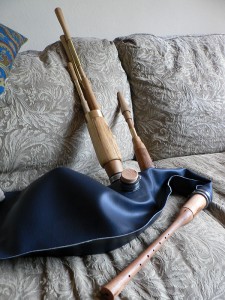 Pareto Principle: Roughly 80% of the effects of many events come from 20% of the causes.
Pareto Principle: Roughly 80% of the effects of many events come from 20% of the causes.
We all want to crack the secret of good bagpiping and drumming and achieve success on the competition field, don’t we? Pipe bands here in the USA work very hard to be musically and competitively successful, but I’ll bet that not many can identify the keys to their success—or lack of it. Sure we toss around comments such as “bad run,” “lousy judging,” “mistakes,” “the weather” as blame but none of it, if removed entirely as factors would guarantee success.
So, hereby note this pronouncement: The secret to good pipe band-ing is found in the secret to good tennis. What is the secret to good tennis, you ask? Well, for starters, the secret is not found in the clothes, the balls, or expensive rackets. Nor is it in the types of shoes you wear. The trick to good tennis is to lob the ball over the net. If you can do that, you will score and/or convert 80% of the time in all the games you play. Why? Because it is an unspoken fact that 80% of amateur tennis players will not be able to return the ball if you lob it over the net. No topspin, power serve, or fancy swing required.
As you’re scratching your head on this one, ponder this: An 80% success rate is a better starting point for greater success than 20%, yes? Read More

 Fellow bagpipe addict and pipehacker-in-training Johnny L. stopped by for a visit recently and he is the first recipient of the “Pipehacker DIYB award.” OK, I made that last part up, but he should win something since he has performed ultimate pipehacking and created sets of sleek and minimalist moutblown smallpipes using nothing but a small wood lathe, a drill press, and his grey matter.
Fellow bagpipe addict and pipehacker-in-training Johnny L. stopped by for a visit recently and he is the first recipient of the “Pipehacker DIYB award.” OK, I made that last part up, but he should win something since he has performed ultimate pipehacking and created sets of sleek and minimalist moutblown smallpipes using nothing but a small wood lathe, a drill press, and his grey matter.
The pipes are true DIY from top to bottom, inside and out with the exception of the drone reeds. Far from being an amateur affair, they are expertly crafted and designed. What stands out about these is that John has used salvaged wood where he can find it in the parks and woodlands of New Jersey. He’s made several sets while channelling the ancient pipers of old who had to rely on their own skills and wits to construct instruments and make music. If I might be so bold, his sets capture the pioneering American spirit of creative enterprise. They are the essence of DIY, which is breaking the shackles of commercial production and fulfilling your own needs on your own terms.
 The main drone stock of John’s pipes is made of found maple while the drones have been hand-turned using ash or hornbeam. A clever application of brass hobby tubing and plastic O-rings on tuning slides and joints completes the construction. John has opted for a modular approach that facilitates experimentation by creating a common stock that is open at the base to fit onto another stock which is tied into the bag. The bag then stands alone and John can change things and create new drones and test easily. John has gone “vegan” with his set up and used furniture vinyl to make his bags and toilet bowl flapper material for the stock grommets, which all work quite well I might add. John is still experimenting with the chanter, which he turned in an almost futuristic profile that evokes the design of many antique pipes. The sound is also not bad, but John admits trouble with a few top hand notes. His home-grown reed might be to blame, but that is something I’m sure he’ll crack.
The main drone stock of John’s pipes is made of found maple while the drones have been hand-turned using ash or hornbeam. A clever application of brass hobby tubing and plastic O-rings on tuning slides and joints completes the construction. John has opted for a modular approach that facilitates experimentation by creating a common stock that is open at the base to fit onto another stock which is tied into the bag. The bag then stands alone and John can change things and create new drones and test easily. John has gone “vegan” with his set up and used furniture vinyl to make his bags and toilet bowl flapper material for the stock grommets, which all work quite well I might add. John is still experimenting with the chanter, which he turned in an almost futuristic profile that evokes the design of many antique pipes. The sound is also not bad, but John admits trouble with a few top hand notes. His home-grown reed might be to blame, but that is something I’m sure he’ll crack.
I can’t decide what enthralls me more about them, the sleek, “retro” look or the cleverness of the construction. Playing them is as much a pleasure as playing any commercially made set of smallpipes and the tonal issues are something I’m sure John will resolve soon enough. An inspiring endeavor though, and one that I hope encourages others down the same path. Click below for some short sound samples of these DIY salvaged wood smallpipes.